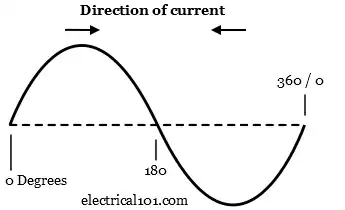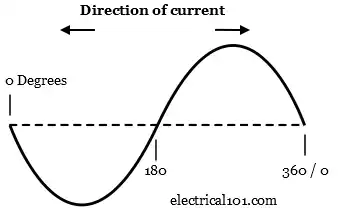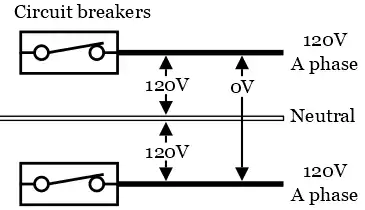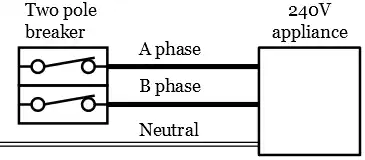
Switches | Outlets & Plugs | Ballasts | Replace Ballasts | LED Tube Lights | Troubleshooting | Basic Electricity | Misc Articles
About Privacy Policy Sitemap Copyright © 2024 Electrical101.com Terms of Use
Different Voltages
240 Volt Wiring Diagrams
The potential difference (voltage) between A and B phase 120 volts is 240 volts. The potential difference of two 120 volts lines at the same phase is 0 volts. A and B phase voltage is needed to supply 240 volts to a load.
Voltage between A and B phase is 240 Volts
Voltage between A and A phase is 0 Volts
240 Volts Appliance Wiring Diagram
Residential voltage in the USA and Canada is 120 / 240 volts AC. Power enters the dwelling’s main electrical panel from a power company transformer as two 120 volt lines with phases that are 180 degrees apart. 120 and 240 volts (along with neutral and ground) is then distributed to outlet boxes (switch, outlet, light fixture, etc) throughout the dwelling.
Standard Voltage in the US
110, 115, 120, 125, 130, 220, 230, 240, 250 volts, what are all these different voltages?
Nominal voltage -
Higher voltage ratings of 125, 130, 230, and 250 volts are for switches, outlets, bulbs, and certain loads. These ratings indicate the upper limit of voltage for a device or load to operate properly under normal conditions.
Lower voltage ratings of 110 , 115, and 220 volts are for loads (appliances, motors, etc). These ratings indicate the lower limit of voltage for proper operation under normal conditions.
Standard Voltage by Country
240 Volts AC
Residential electric ranges, electric dryers and central air conditioners usually need 240 volts to operate. 240 volts is achieved when combining two sources of 120 volts of different phases (A and B phases). B phase current flows in the opposite direction as A phase. When A phase voltage peaks at +170 volts, B phase is at -
120 Volts A Phase Sine Wave
120 Volts B Phase Sine Wave

Different Voltages





This is a wiring diagram of a 240 volts circuit for an appliance. A two pole breaker supplies 120 volts A and B to get 240 volts.